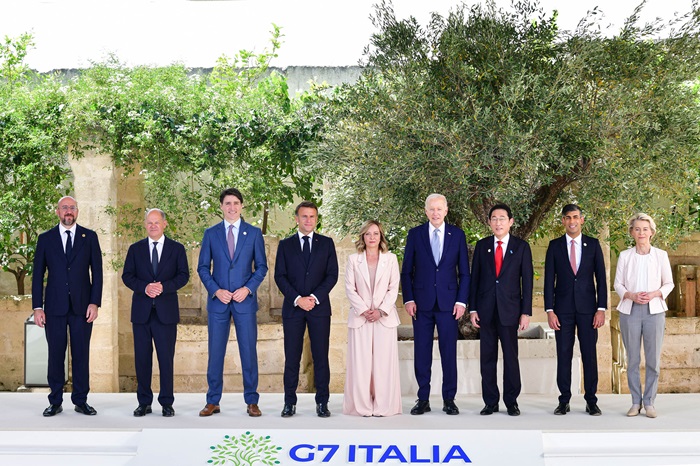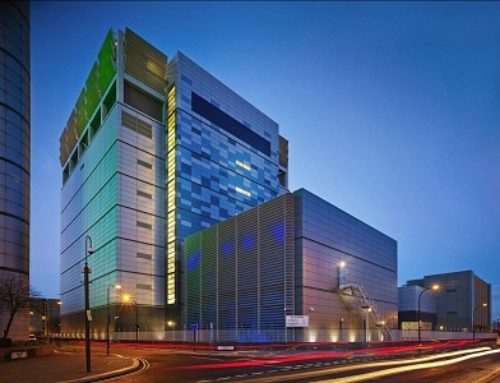1. UK’s FDI project total grows as Europe’s falls
The United Kingdom has seen a significant increase in its Foreign Direct Investment (FDI) projects, even as Europe’s overall FDI project total has declined.
UK’s FDI Growth
In 2023, the UK was home to 985 FDI projects, marking a 6% increase from the previous year. This growth has been driven by a resurgence in digital investment, securing over a quarter (27%) of all European tech projects last year. The UK’s share of Europe’s inward investment market grew to 17.3%, up from 15.6% in 2022.
Greater London was a key beneficiary of the investment growth in technology and financial services across 2023, becoming the leading European region for investment. Greater London recorded 359 FDI projects in 2023, which was a 20% increase on 2022.
Europe’s FDI Decline
In contrast, Europe as a whole recorded a 4% year-on-year decline with a total of 5,694 projects recorded in 2023. This was the continent’s lowest FDI total since 2020 and was 11% lower than its pre-pandemic level (6,412) and 14% lower than 2017 (6,653), which represented Europe’s highest peak for projects in the last decade.
France, despite being Europe’s largest recipient of inward investment, recorded 1,194 FDI projects in 2023, representing a 5% decrease on its 2022 project total. Germany also saw a decline, recording 733 projects in 2023, which was a decline of 12% on the year before.
Looking Ahead
Despite the growth in the UK’s FDI projects, the broader FDI trend mirrors Europe’s by recording a lower level of projects in the last four years in comparison to pre-pandemic levels. UK project numbers have remained below 1,000 since 2019 and there were 220 fewer projects recorded in 2023 than at the UK’s high point of the decade in 2017, when 1,205 projects were recorded.
As we look to the future, it will be interesting to see how these trends continue to evolve and what impact they will have on the global economy.
2. Sri Lanka Thailand Free Trade Agreement

Kandy by Travel Local Flickr CC BY 2.0 https://creativecommons.org/licenses/by/2.0/
On February 3, 2024, a significant milestone was achieved in the economic relations between Sri Lanka and Thailand. The two nations signed the Sri Lanka-Thailand Free Trade Agreement (FTA), marking Thailand’s 15th FTA and the first under the current Thai administration.
The Signing Ceremony
The signing ceremony took place during the visit of Prime Minister and Minister of Finance Srettha Thavisin to Sri Lanka. The agreement was signed by Deputy Prime Minister and Minister of Commerce Phumtham Wechayachai and Minister of Trade, Commerce, and Food Security of Sri Lanka Kachchakaduge Nalin Ruwanjeewa Fernando. The event was witnessed by Prime Minister Srettha and Mr. Ranil Wickremesinghe, President of the Democratic Socialist Republic of Sri Lanka.
The Agreement Details
The Sri Lanka-Thailand FTA aims to liberalise up to 85 percent of tariff lines over a span of 15 years. The agreement would see around 50 percent of tariff lines liberalised when it comes into force. However, 15 percent of products will remain on a negative list, subject to import protection to give high profits to domestic producers at the expense of consumers.
The balance 30 percent of tariff lines would be liberalised over 15 years. The agreement stipulates that 10 percent would be liberalised in equal instalments from the 1st to the 5th year, another 10 percent from the 5th to the 10th year, and the final 10 percent from the 10th to the 15th year. On the 15th year, there would be partial liberalisation of 5 percent tariff lines.
The Expected Impact
Both Thailand and Sri Lanka believe that the agreement will increase trade and investment and provide more business opportunities between the two countries. The Prime Minister of Thailand also proposed cooperation on marine tourism between Thailand, Sri Lanka, and India, as well as cultural tourism, especially tourism based on the common faith of Buddhism.
In conclusion, the Sri Lanka-Thailand FTA is a significant step towards fostering economic cooperation and strengthening the bilateral ties between the two nations. It is expected to open up new avenues for trade and investment, benefiting both countries in the long run.
3. Chip stocks lose $500 billion in value on China trade fears

The global semiconductor industry faced a significant setback on Wednesday, with Wall Street’s semiconductor index losing over $500 billion in stock market value. This marks one of the worst sessions for the industry since 2020.
The massive drop in value was triggered by fears of escalating trade tensions between the United States and China. Reports suggest that the United States is considering imposing tighter restrictions on exports of advanced semiconductor technology to China. This news has sparked concerns among investors, leading to a sell-off in chip stocks.
Among the companies affected, AI heavyweight Nvidia fell almost 7%, losing more than $200 billion in market capitalisation. Other companies such as AMD and Arm also saw their stocks drop by about 10%. Dutch chipmaking equipment provider ASML Holding saw its U.S.-listed shares slump 13%.
Interestingly, companies with U.S. chip manufacturing operations saw gains, with GlobalFoundries jumping almost 7% and Intel edging 0.35% higher. Some analysts believe Intel could benefit from the geopolitical tensions as it is building several plants in the country.
The latest developments come after the Biden administration moved aggressively to curb Chinese access to cutting-edge chip technology. In October, sweeping restrictions were issued to limit exports of AI processors designed by firms including Nvidia. These curbs have dented U.S. chipmakers’ sales to China.
The situation is further complicated by comments from former U.S. President Donald Trump, who suggested that Taiwan, a key production hub for semiconductors, should pay the United States for its defense. This sent U.S.-listed shares of Taiwan’s TSMC, the world’s largest contract chip maker, down 8%.
The global chip supply chain, in which Taiwan plays an outsized role, is now under threat. Analysts have warned that any conflict over the island may shatter the global economy.
The Philadelphia Semiconductor index collapsed 6.8% in its biggest one-day decline since the COVID pandemic sent global markets into a tailspin. The fallout from these developments is expected to have far-reaching implications for the global tech industry.
In conclusion, the escalating trade tensions between the U.S. and China have sent shockwaves through the global semiconductor industry. As the situation continues to unfold, investors and industry stakeholders will be closely monitoring the developments and their potential impact on the global chip supply chain.
4. European Consumer-Oriented Inbound Trade Mission to Oregon Open

Crater Lake, Oregon, USA, with Tsuga mertensiana by Charles Dawley from Petoskey CC BY 2.0 https://creativecommons.org/licenses/by/2.0/deed.en
The European Union (EU) stands as one of the primary export destinations for U.S. food and agricultural products. This dynamic market boasts substantial purchasing power and is characterised by ever-evolving consumer preferences, which significantly shape global food trends. Notably, European consumers are increasingly prioritising healthy dietary choices, gravitating towards products that emphasise wellness and nutritional value.
A Unique Opportunity
For the first time since the pandemic in 2020, buyers from the European Union are traveling to Oregon to meet with agricultural businesses. This inbound trade mission offers the potential to reestablish and create new export connections to begin tapping into one of the largest agricultural markets seeking fresh, healthy, and delicious products.
Event Details
The event will take place from September 16 to September 20, 2024. The itinerary includes tabletop meetings in Portland, Sacramento, Oakland, and Los Angeles. Participants will have the opportunity to forge connections with pre-screened importers and buyers representing the European Union. They will also be able to evaluate their product’s alignment within the marketplace and analyse the competitive environment through interactions with both retail and wholesale buyers.
Products of Interest
Buyers from the European Union are seeking consumer-oriented foods, healthy snacks, condiments, dried fruit/nuts, frozen foods, beverages, fruits and vegetables, cereals, teas, and confectionery products. If you specialise in any of these products, this is a golden opportunity to make your Oregon products known and visible.
Registration Details
The participation fee for the event is $50. Interested parties are encouraged to register for the European Inbound trade mission before the August 30 deadline.
Conclusion
The 2024 European Consumer-Oriented Inbound Trade Mission to Oregon presents an exclusive opportunity to meet with buyers from the European Union. It’s a chance to showcase Oregon’s consistently high-quality agricultural products and tap into the changing and dynamic landscape of consumer-oriented goods in the European Union. Don’t miss out on this opportunity to expand your trade horizons!
5. G7 Trade Ministers Convene in Reggio Calabria: A Step Towards Global Trade Reform

The G7 Trade Ministers’ meeting, a significant event on the international trade calendar, took place in Reggio Calabria and Villa San Giovanni on July 16-17, 2024. This meeting followed an initial videoconference organised by the Italian G7 Presidency on February 7, 2024.
A Global Gathering
The meeting was hosted by Italy’s Deputy Prime Minister and Minister for Foreign Affairs and International Cooperation, Hon. Antonio Tajani. The attendees included the G7 Ministers, the Vice-President of the European Commission and Commissioner for Trade, Ministers of invited non-member countries, and representatives of the business world (Business 7) and International Organisations.
Addressing Key Issues
The main objective of the G7 Trade Ministerial was to respond to the tensions and frictions that jeopardise global trade and sustainable and inclusive growth. Four main issues were identified for international trade that needed to be addressed:
- Consolidation of the multilateral trading system through the reform of the World Trade Organization (WTO).
- Equal conditions of access to third markets.
- Trade and environmental sustainability.
- Economic resilience and security.
Focus on Supply Chain Resilience
The session with non-member countries and business representatives was devoted to supply chain resilience. Special attention was paid to the crisis in the Red Sea, which affects international trade routes and has serious economic impacts on Mediterranean ports and supply chains. The stability and prosperity of the Indo-Pacific region, key to safeguarding political and international trade order, was also discussed.
The Way Forward
The G7 Ministers and their guests had the opportunity to discuss these major issues with a view to maintaining trade as a driver of growth and development for both G7 members and the rest of the world. The G7 will work to ensure a well-functioning WTO, which is also essential for Italy’s economic development, given the country’s capacity to export.
Featured image Benjamin Davies via Unsplash







